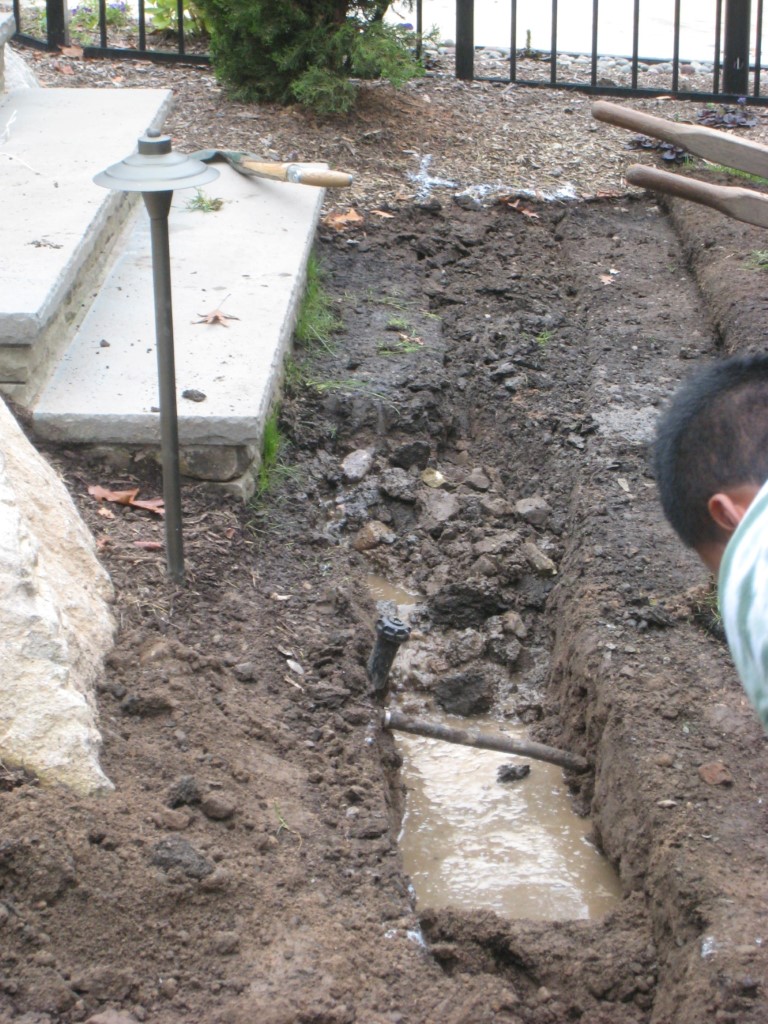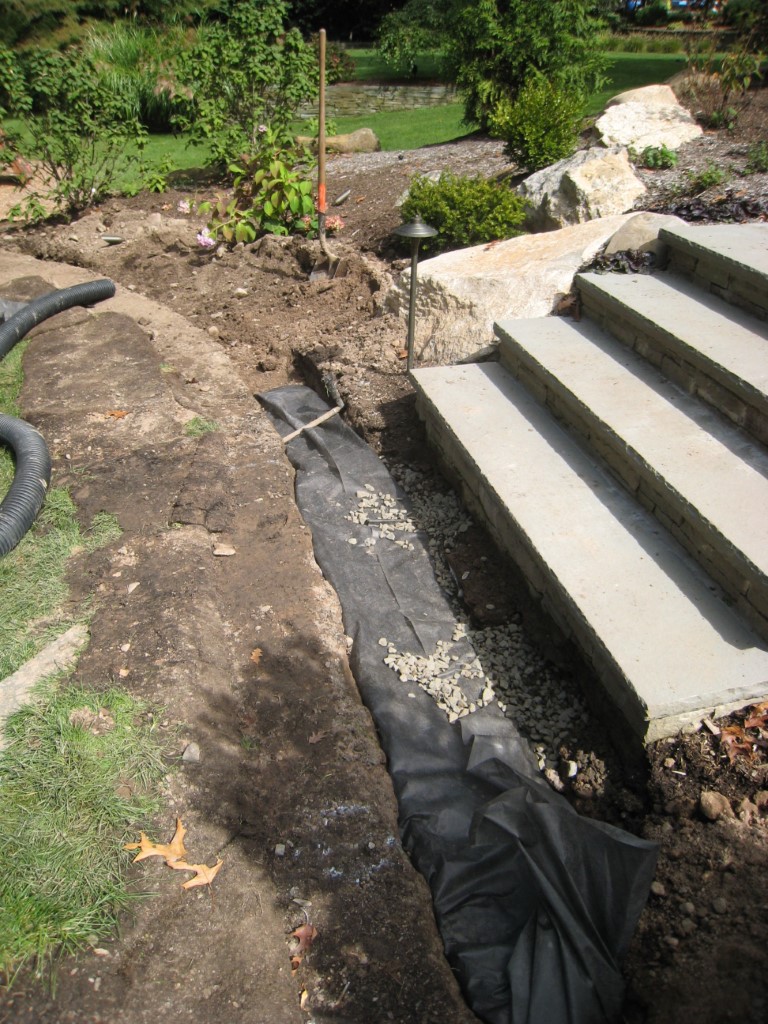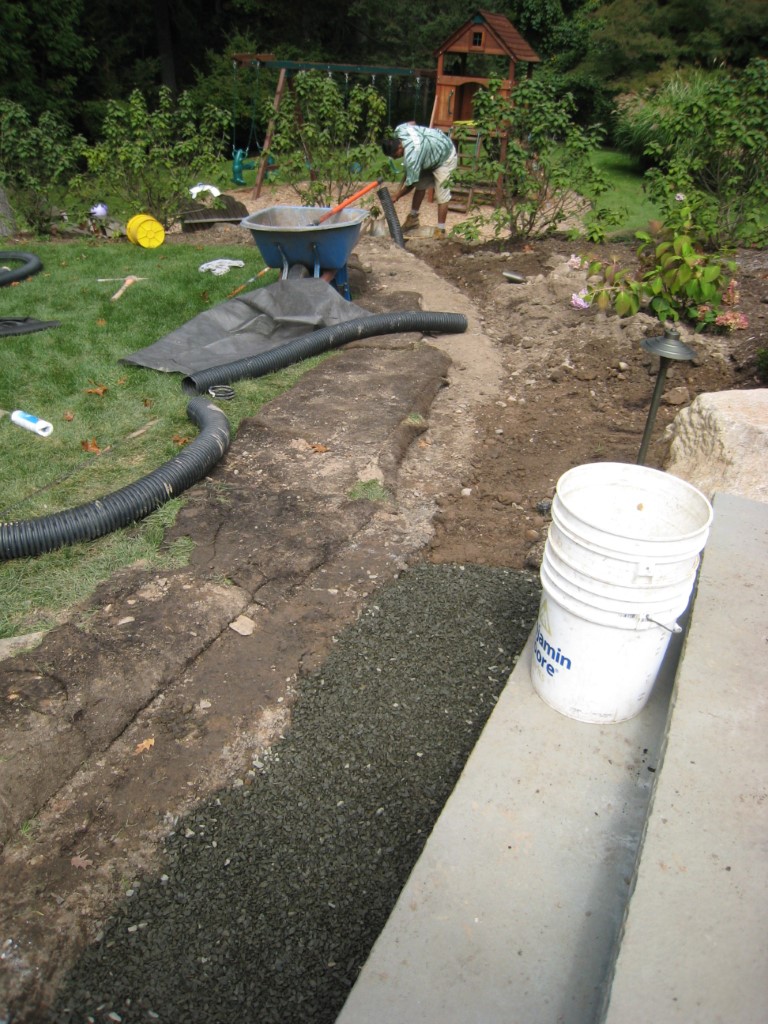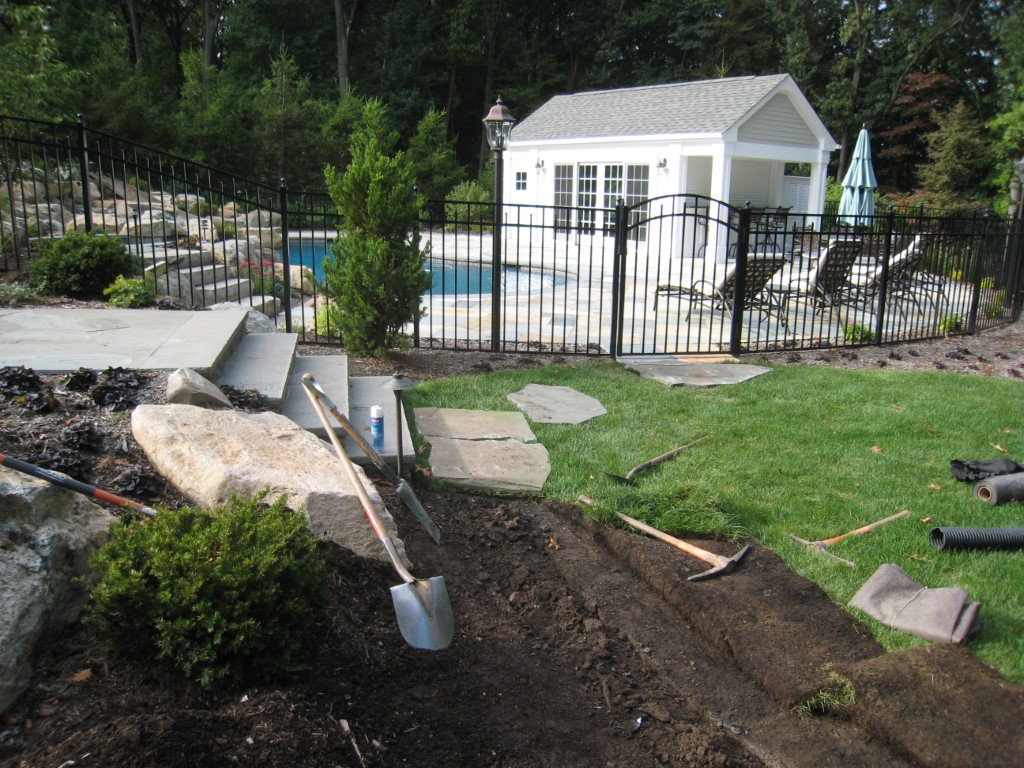The gravel footing of these stone steps was doing its job of keeping moisture away from the construction itself.
However, water runoff from the upper lawn area at the top of the stairs was entering the stairway construction.
In effect, the gravel footing was acting like a drainage seepage-pit for this upper lawn water.
The volume of water was too much to naturally drain into the subsoil and was causing this soggy condition at the base of the stairs.
Planning A Solution
Water is an amazing force. It is powerful and relentless. With this in mind your solutions should be designed to work with waters’ natural tendencies.
The excess water was draining from the stair’s gravel footing successfully.
The solution to the soggy lawn area was to “intercept” the water at the base of the gravel footing where it was exiting the stairs and divert it.

The tactic to intercept water and divert it is the core of most drainage solutions.
In this situation 4″ perforated pipe will be used to “intercept” the water, and solid pipe will carry it to a safe, open area.
In the picture above, the crew has already trenched from where the water will exit and are now nearing the steps. As the trench reaches the steps it begins to fill with water.
Water will seek the path of least resistance — and the open trench is now that path.
The piping, when installed, will provide a permanent avenue and relief for the water.
How This Drain Is Put Together
The perforated pipe (with holes) and the solid pipe (w/o holes) are the same size and made of the same material.
In order to use the perforated and solid pipe together we’ll connect the two with a “coupling”.

It’s important to note that the bottom of the entire trench has pitch of at least 1/8″ per foot away from the stairs.
Filter fabric is used to line the bottom and sides of the trench in front of the stairs.
A section of perforated drain pipe is laid into the trench and surrounded with 3/8″ gravel.
The fabric insures no silt or soil will enter into this gravel/pipe zone.
Just past the stairs we convert to solid pipe using the coupling.
In the picture above you see the filter fabric which has been folded over the gravel. Just past the stairs the fabric ends – this is where the perforated pipe converts to solid.
The trench with the solid drain pipe is backfilled carefully with earth. It’s important while backfilling to check that the pipe sits solidly on the bottom of the trench and has pitch.
The solid pipe exits to an open space where the water can drain naturally.
We’re using smaller fieldstones (4 – 6″ dia.) to build around the pipe end. This rockwork will help secure and protect the end of the pipe.

The Drain’s Finishing Details
The filter fabric was kept 4″ below finished grade so 2″ of gravel could be added to set the flagstone.
With the flagstone set over the drainage work, the rest of the path went in by the normal process.
All the disturbed areas were finish-graded, sod was placed back including between the flagstone pieces — and you would never know the drainage solution had ever happened.
Every water problem has its own unique characteristics and circumstances. The solutions will be equally unique, however the concept remains the same.
You’re not stopping the water, you’re “managing” it.

